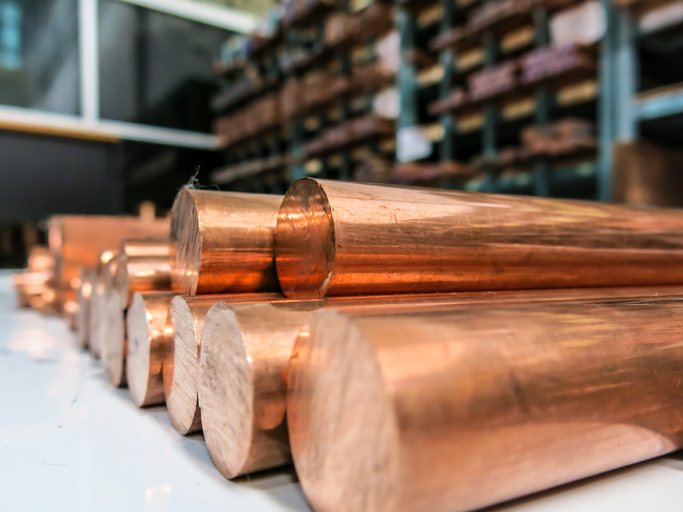Working with various copper, pure copper and nickel-based alloys allow for manufacturers to create end products for customers and the necessary components for their operations. However, one issue that companies experience is alloy quality during the melting and casting process.
When copper and nickel-based alloys are melted, oxygen becomes introduced into the alloys from the atmosphere. Oxygen may also penetrate the alloy through the oxidation process itself during injection or fluxing. In addition, hydrogen can be introduced into the heat melted alloys by way of the atmosphere and the fuel that is burned, or from the fluxes and scrap metals that are placed into the process. When the melted alloys solidify during the casting, the soluble hydrogen and oxygen combine. Once combined, the gasses form pits, cracks and bubbles in the alloy as it is taken out of the mold.
When looking for solutions to overcome this issue, manufacturers turn to Lithium Copper as the perfect deoxidation and degassing alloy.
Lithium Copper is a master alloy, a semi-finished metal that has a base metal of 98% copper with 2% of lithium combined. Lithium itself is a very soft, silvery white, element that can be cut with a regular knife as it is part of the alkali metal group. it has a low boiling point, as well as a high electrochemical potential and heat potential.
When combined with copper, Lithium can be added to other alloys in small quantities during the melt process. This alloy reduces the gas holes, bubbles and cracks in copper and nickel-based alloys by tackling the gasses that are introduced during the melt. Lithium Copper is considered one of the best degassers and deoxidizers out on the market. It reduces the oxygen content during the melt process so that nickel-based and copper alloys maintain their mechanical properties. This oxygen reduction is called deoxidation.
In addition, Lithium Copper also seeks out other unwanted gasses in the melt, such as hydrogen. The master alloy allows for the dissolved hydrogen to collect in bubbles that are lifted out of the copper or nickel-based alloy when breaking up from the molten surface. So it makes the perfect degasser master alloy.
Another reason that Lithium Copper is sought after for its deoxidation and degassing properties is because this master alloy doesn’t negatively impact the conductive qualities in copper. The master alloy also has a low reactivity. The copper material can maintain its ductile, malleable, electrical conductivity and thermal conductivity without being negatively impacted by the introduction of the Lithium.
Ordering Lithium Copper from Belmont Metals
Here at Belmont Metals based in Brooklyn, New York, we offer 2% Lithium Copper to manufacturers to help with their melting processes when creating components and end products. We offer this master alloy as slabs, pieces and polished pieces in varying quantities. So you can decide on the right amount and form the Lithium Copper should have to have the desired melt and fluidity during the casting process. In addition, obtaining Lithium Copper as a solid piece lessens the likelihood of other materials or moisture to be introduced into the melt to cause a disturbance or undesired reaction, which can be the case when obtaining Lithium in a pure state that is encased in a copper tube or cartridge.
If you are a manufacturer dealing with porosity and gas holes in their copper and nickel-based alloys, using Lithium Copper is the ideal solution to eliminate unwanted gasses. To learn more about Lithium Copper and how your manufacturing processes can benefit from its degassing and deoxidation properties, contact our metallurgists today for technical information.

